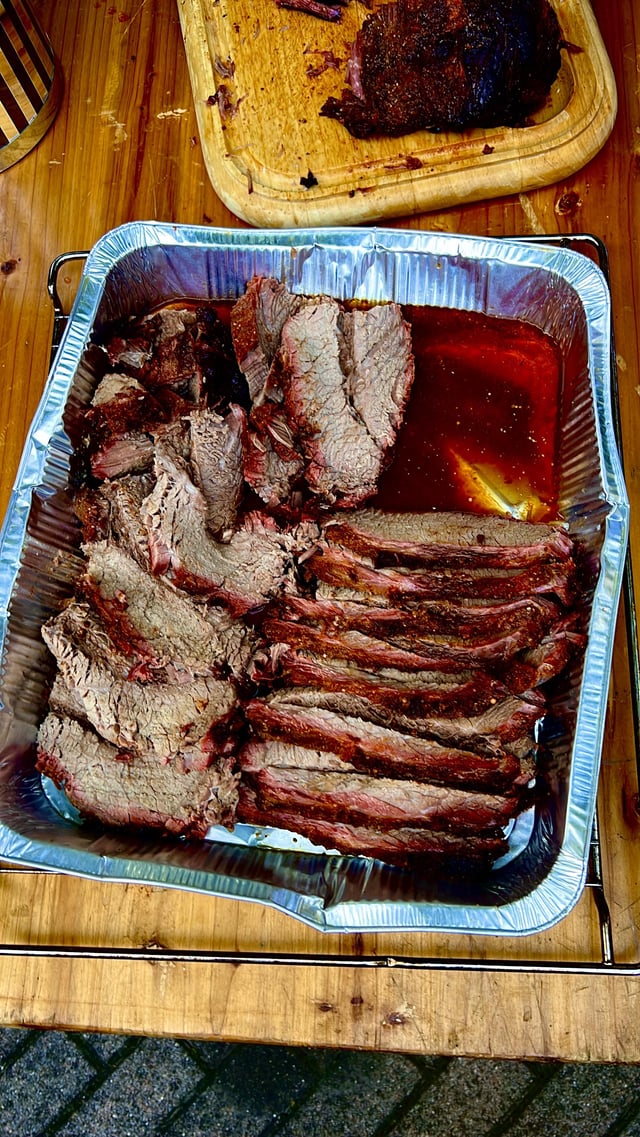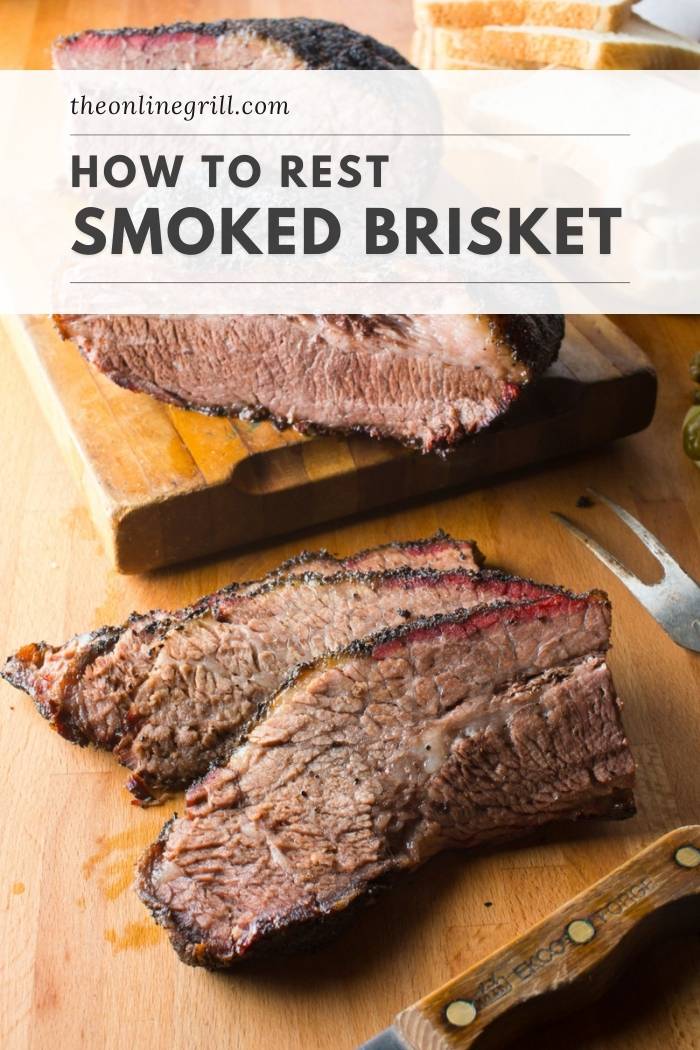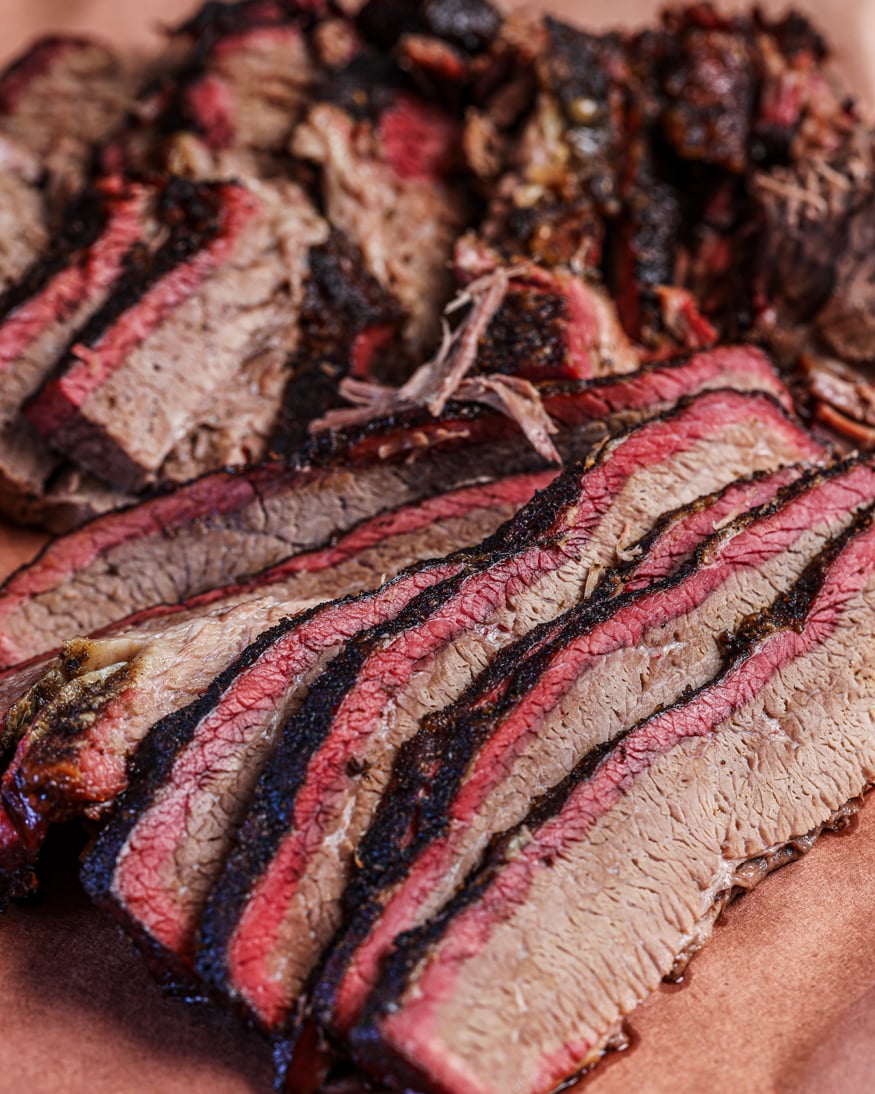Introduction
Overcooking a brisket can result in a less-than-ideal dining experience. It can lead to dryness, chewiness, and a loss of flavor and texture. To ensure that your brisket turns out perfectly tender and juicy, it is important to understand what happens when you overcook it and how to avoid this common pitfall.
Understanding The Problem Of Overcooked Brisket
One of the most common problems with overcooked brisket is dryness. Brisket is a relatively lean cut of meat, and if it is cooked for too long, the moisture can evaporate, resulting in a dry and tough texture. Overcooking can also cause the fat to render out completely, leading to a significant loss of flavor and juiciness.
Another issue with overcooked brisket is chewiness. When brisket is cooked beyond its optimal temperature, the collagen, which is responsible for the meat’s tenderness, breaks down excessively and becomes tough and chewy. This can make the brisket difficult to eat and diminish the overall enjoyment of the dish.
Importance Of Avoiding Common Pitfalls
Avoiding the common pitfall of overcooking brisket is essential to achieving a flavorful and tender result. By ensuring that you cook the brisket to the right temperature and for the appropriate amount of time, you can avoid the negative effects of overcooking.
Proper temperature control is crucial. It is recommended to cook brisket to an internal temperature of around 195-203°F (90-95°C) to achieve the perfect balance of tenderness and juiciness. Using a meat thermometer can help you gauge when the brisket is done and prevent it from becoming overcooked.
Additionally, monitoring the cooking time is important. While brisket requires a long cooking time to tenderize, exceeding the recommended cooking time can lead to dryness and chewiness. It is important to follow a reliable recipe or cooking guide and adjust the cooking time based on the size and thickness of the brisket.
In conclusion, understanding the problems associated with overcooked brisket and taking the necessary steps to avoid them can greatly enhance your culinary experience. By maintaining proper temperature control and monitoring the cooking time, you can ensure that your brisket turns out moist, flavorful, and tender. So, next time you fire up the grill or smoker, keep these tips in mind to enjoy a perfectly cooked brisket. Happy grilling!

What Happens When You Overcook Brisket
Effects Of Overcooking On Texture And Taste
Overcooking a brisket can have negative effects on both the texture and taste of the meat. When brisket is cooked for too long, the collagen breaks down excessively, resulting in a tough and chewy texture. This can make it difficult to enjoy the brisket and can diminish the overall dining experience. Additionally, overcooking can cause the moisture to evaporate from the meat, leading to a dry and less flavorful brisket. These effects can be disappointing, especially when you’re aiming for a tender and juicy piece of brisket.
Dryness: The Most Common Problem
Dryness is one of the most common problems when it comes to overcooked brisket. Brisket is a relatively lean cut of meat, and if it is cooked for too long, the moisture can evaporate, resulting in a dry and tough texture. Overcooking can also cause the fat to render out completely, leading to a significant loss of flavor and juiciness. This can leave you with a brisket that is difficult to chew and lacks the desired tenderness and succulence.
To avoid overcooking and the problem of dryness, it is important to cook the brisket to the right temperature and for the appropriate amount of time. Using a meat thermometer can help you gauge the internal temperature of the brisket and ensure it is cooked to perfection. It is generally recommended to cook the brisket to an internal temperature of around 195-203°F (90-95°C), as this will give you the perfect balance of tenderness and juiciness.
In addition to temperature control, it’s essential to monitor the cooking time. While brisket requires a long cooking time to tenderize, exceeding the recommended cooking time can lead to dryness and chewiness. Following a reliable recipe or cooking guide and adjusting the cooking time based on the size and thickness of the brisket can help you achieve the desired results.
By understanding the effects of overcooking and taking appropriate measures to avoid them, you can ensure that your brisket turns out moist, flavorful, and tender. So, next time you’re cooking brisket, keep these tips in mind to enjoy a perfectly cooked meal. Happy grilling!
Avoiding Overcooked Brisket
Effects Of Overcooking On Texture And Taste
Overcooking a brisket can have negative effects on both the texture and taste of the meat. When brisket is cooked for too long, the collagen breaks down excessively, resulting in a tough and chewy texture. This can make it difficult to enjoy the brisket and can diminish the overall dining experience. Additionally, overcooking can cause the moisture to evaporate from the meat, leading to a dry and less flavorful brisket. These effects can be disappointing, especially when aiming for a tender and juicy piece of brisket.
Dryness: The Most Common Problem
Dryness is one of the most common problems when it comes to overcooked brisket. Brisket is a relatively lean cut of meat, and if it is cooked for too long, the moisture can evaporate, resulting in a dry and tough texture. Overcooking can also cause the fat to render out completely, leading to a significant loss of flavor and juiciness. This can leave you with a brisket that is difficult to chew and lacks the desired tenderness and succulence.
To avoid overcooking and the problem of dryness, it is important to take the following steps:
Choosing The Right Cut Of Brisket
Selecting the right cut of brisket is crucial to avoid overcooking. Look for a brisket with adequate marbling, as this fat will help keep the meat moist during cooking. It is also essential to choose a brisket with consistent thickness throughout to ensure even cooking.
Proper Cooking Techniques
To prevent overcooking, it is essential to use proper cooking techniques. Here are some tips:
- Use a meat thermometer to monitor the internal temperature of the brisket. Cook it to an internal temperature of around 195-203°F (90-95°C) for a perfect balance of tenderness and juiciness.
- Follow a reliable recipe or cooking guide that provides recommended cooking times based on the size and thickness of the brisket.
- Consider using a cooking method such as low and slow smoking, which allows for gradual cooking and preserves moisture in the meat.
- Use a marinade or a rub that adds flavor and helps tenderize the brisket. However, avoid acidic marinades that can cause the meat to become mushy if left for too long.
By understanding the effects of overcooking and implementing these steps, you can ensure that your brisket turns out moist, flavorful, and tender. Next time you’re cooking brisket, remember these tips to enjoy a perfectly cooked meal. Happy grilling!
The Importance Of Temperature Control
Maintaining A Consistent Temperature
One crucial factor in preventing overcooked brisket is maintaining a consistent temperature throughout the cooking process. Fluctuations in temperature can result in uneven cooking and lead to overcooking in some parts of the brisket. To ensure a consistent temperature, keep a close eye on your fuel source, whether it’s charcoal, wood, or gas. Replenish it as needed to maintain a steady heat. Additionally, consider using a smoker or an oven with good temperature control to maintain a stable cooking environment.
Using A Thermometer To Prevent Overcooking
Another essential tool in preventing overcooked brisket is a meat thermometer. Relying solely on visual cues to determine doneness can be misleading, as they are not always accurate indicators of internal temperature. Invest in a good-quality meat thermometer that can be inserted into the thickest part of the brisket without touching bone or fat. The ideal internal temperature for a perfectly cooked brisket is around 195-203°F (90-95°C). By using a thermometer, you can accurately monitor the progress of your brisket and remove it from the heat at the right time to prevent overcooking.
Following these temperature control tips and using a thermometer will greatly increase your chances of achieving a perfectly cooked brisket, tender and moist in every bite. Remember, proper temperature monitoring and consistency are key to avoiding the disappointment of overcooked brisket and ensuring a delicious dining experience. So, next time you’re preparing brisket, don’t forget these essential tips and tricks to prevent overcooking. Your taste buds will thank you!

The Importance Of Temperature Control
Maintaining A Consistent Temperature
One crucial factor in preventing overcooked brisket is maintaining a consistent temperature throughout the cooking process. Fluctuations in temperature can result in uneven cooking and lead to overcooking in some parts of the brisket. To ensure a consistent temperature, it is important to keep a close eye on the fuel source, whether it’s charcoal, wood, or gas. Continuously replenish the fuel as needed to maintain a steady heat. Consider using a smoker or an oven with good temperature control to create a stable cooking environment.
Using A Thermometer To Prevent Overcooking
Another essential tool in preventing overcooked brisket is a meat thermometer. Visual cues alone may not accurately indicate the internal temperature of the meat. Investing in a good-quality meat thermometer that can be inserted into the thickest part of the brisket, without touching bone or fat, is highly recommended. The ideal internal temperature for a perfectly cooked brisket is around 195-203°F (90-95°C). By using a thermometer, you can accurately monitor the progress of your brisket and remove it from the heat at the right time to prevent overcooking.
Resting The Brisket
Allowing The Brisket To Rest Before Slicing
Once the brisket has reached the desired internal temperature and is removed from the heat source, it is important to allow it to rest. Resting the brisket for 20-30 minutes before slicing allows the juices to redistribute, resulting in a more evenly flavored and tender brisket. Wrap the brisket in aluminum foil or place it in an insulated cooler to retain heat during the resting period.
Retaining Moisture And Tenderness
Resting the brisket aids in retaining moisture and ensuring tenderness. During the cooking process, the heat causes the muscle fibers in the brisket to contract, which can lead to a tougher texture. Allowing the brisket to rest enables the muscle fibers to relax, resulting in a more tender and juicy final product. The rest also allows the brisket to reach its optimum level of flavor as the juices redistribute throughout the meat.
By following these temperature control tips, using a thermometer, and allowing the brisket to rest before slicing, you greatly increase your chances of achieving a perfectly cooked, moist, and tender brisket. Remember, temperature monitoring and consistency are key to avoiding overcooking and ensuring a delicious dining experience. So, next time you’re preparing brisket, don’t forget these essential tips and tricks. Your taste buds will thank you!
Tips To Avoid Overcooking
Monitoring Cooking Time And Internal Temperature
To prevent overcooking brisket, it is crucial to monitor both the cooking time and the internal temperature of the meat. Keep a close eye on the fuel source, whether it’s charcoal, wood, or gas, to maintain a consistent temperature. Fluctuations in temperature can result in uneven cooking and overcooking. Invest in a good-quality meat thermometer and insert it into the thickest part of the brisket, without touching bone or fat. The ideal internal temperature for perfectly cooked brisket is around 195-203°F (90-95°C). By monitoring the temperature, you can ensure you remove the brisket from the heat at the right time to prevent overcooking.
Using Indirect Heat And Wrapping Techniques
Another technique to prevent overcooked brisket is to use indirect heat and wrapping. Indirect heat creates a more gentle cooking environment, reducing the risk of overcooking. Consider using a smoker or an oven with good temperature control for a stable cooking environment. Wrapping the brisket in aluminum foil or butcher paper can help retain moisture and shorten the cook time. This method also helps achieve a consistent result, making it less likely to have overcooked brisket.
Resting The Brisket
Once the brisket has reached the desired internal temperature, it is important to allow it to rest. Resting the brisket for 20-30 minutes before slicing allows the juices to redistribute, resulting in a more tender and flavorful brisket. To retain heat during the resting period, wrap the brisket in aluminum foil or place it in an insulated cooler.
Remember, by closely monitoring the cooking time and internal temperature, using indirect heat, and utilizing wrapping techniques, you can significantly reduce the chances of overcooking your brisket. These tips will help you achieve a perfectly cooked, moist, and tender brisket every time.
Rescuing An Overcooked Brisket
Methods To Salvage A Dry Brisket
If you’ve accidentally overcooked your brisket and it has turned out dry, don’t worry. There are ways to save it and still enjoy a delicious meal. Here are some methods to salvage an overcooked brisket:
Moisture-enhancing Techniques
One of the main problems with overcooked brisket is dryness. To add moisture back to the meat, you can try the following techniques:
- Basting: Brush or spray the brisket with a flavorful liquid like beef broth, apple juice, or a marinade. This will help add moisture to the meat and prevent it from drying out further.
- Sauce: Serve the overcooked brisket with a generous amount of BBQ sauce or your favorite condiments. The sauce will not only add flavor but also help mask any dryness.
- Au jus: Serve the brisket with a side of au jus, which is a flavorful meat juice made from the drippings of the cooked brisket. The au jus will add moisture and enhance the overall taste of the meat.
- Slicing technique: Slice the overcooked brisket against the grain, which will help break down the meat fibers and make it more tender. Thinly slicing the brisket will also make it easier to chew.
Remember that these techniques will not completely fix an overcooked brisket, but they can help improve its texture and flavor.
By following these methods, you can salvage an overcooked brisket and still enjoy a delicious meal. However, prevention is always better than cure. To avoid overcooking brisket in the first place, make sure to follow the tips in the previous section, such as monitoring cooking time and internal temperature, using indirect heat and wrapping techniques, and allowing the brisket to rest before slicing.
Learning from your cooking experience and constantly refining your techniques will help you become a master at cooking moist and tender brisket every time. So don’t be discouraged if you overcook a brisket – use it as an opportunity to learn and improve your skills for future cooking endeavors.

Rescuing An Overcooked Brisket
Methods To Salvage A Dry Brisket
If someone accidentally overcooks a brisket and it turns out dry, there are ways to save it and still enjoy a delicious meal. Here are some methods to salvage an overcooked brisket:
Moisture-enhancing Techniques
One of the main problems with overcooked brisket is dryness. To add moisture back to the meat, try the following techniques:
- Basting: Brushing or spraying the brisket with a flavorful liquid like beef broth, apple juice, or a marinade can help add moisture to the meat and prevent it from drying out further.
- Sauce: Serving the overcooked brisket with a generous amount of BBQ sauce or favorite condiments not only adds flavor but also helps mask any dryness.
- Au jus: Serving the brisket with a side of au jus, which is a flavorful meat juice made from the drippings of the cooked brisket, adds moisture and enhances the overall taste of the meat.
- Slicing technique: Slicing the overcooked brisket against the grain helps break down the meat fibers and make it more tender. Thinly slicing the brisket also makes it easier to chew.
Remember that these techniques will not completely fix an overcooked brisket, but they can help improve its texture and flavor.
By following these methods, one can salvage an overcooked brisket and still enjoy a delicious meal. However, prevention is always better than cure. To avoid overcooking brisket in the first place, make sure to follow the tips in the previous section, such as monitoring cooking time and internal temperature, using indirect heat and wrapping techniques, and allowing the brisket to rest before slicing.
Learning from cooking experience and constantly refining techniques will help become a master at cooking moist and tender brisket every time. So don’t be discouraged if someone overcooks a brisket – use it as an opportunity to learn and improve skills for future cooking endeavors.
Frequently Asked Questions
Common Queries About Avoiding Overcooked Brisket
Here are some common questions people have about avoiding overcooked brisket:
Expert Answers And Tips
Q: What is the ideal temperature to cook a brisket?
A: The ideal temperature to cook a brisket is around 225-250°F (107-121°C). This low and slow cooking method helps break down the tough connective tissues in the meat and allows it to become tender.
Q: How long should I cook a brisket?
A: The cooking time for a brisket can vary depending on the size and thickness of the meat. As a general guideline, you can estimate about 1 to 1.5 hours of cooking time per pound of brisket. However, the most important factor is the internal temperature of the meat. It is recommended to cook the brisket until it reaches an internal temperature of 195-205°F (90-96°C) for optimal tenderness.
Q: Should I wrap the brisket while cooking?
A: Wrapping the brisket in foil or butcher paper during the cooking process can help retain moisture and speed up the cooking time. This method is known as the “Texas crutch” and is commonly used in barbecue competitions. However, it is not necessary and some chefs prefer not to wrap the brisket to achieve a different texture.
Q: How do I know if the brisket is done?
A: The best way to determine if the brisket is done is by using a meat thermometer. Insert the thermometer into the thickest part of the meat, avoiding contact with the bone. When the brisket reaches an internal temperature of 195-205°F (90-96°C), it is cooked and ready to be removed from the heat.
Q: Can I reheat an overcooked brisket?
A: Yes, you can reheat an overcooked brisket, but it may further dry out the meat. To prevent this, make sure to reheat it slowly and add some moisture, such as sauce or broth, to keep the meat juicy.
These are just a few of the common questions and expert tips about avoiding overcooked brisket. Remember to practice and experiment with different techniques to find the perfect balance of flavors and tenderness in your brisket.
Rescuing An Overcooked Brisket
Methods To Salvage A Dry Brisket
If someone accidentally overcooks a brisket and it turns out dry, there are ways to save it and still enjoy a delicious meal. Here are some methods to salvage an overcooked brisket:
- Basting: Brushing or spraying the brisket with a flavorful liquid like beef broth, apple juice, or a marinade can help add moisture to the meat and prevent it from drying out further.
- Sauce: Serving the overcooked brisket with a generous amount of BBQ sauce or favorite condiments not only adds flavor but also helps mask any dryness.
- Au jus: Serving the brisket with a side of au jus, which is a flavorful meat juice made from the drippings of the cooked brisket, adds moisture and enhances the overall taste of the meat.
- Slicing technique: Slicing the overcooked brisket against the grain helps break down the meat fibers and make it more tender. Thinly slicing the brisket also makes it easier to chew.
Remember that these techniques will not completely fix an overcooked brisket, but they can help improve its texture and flavor.
By following these methods, one can salvage an overcooked brisket and still enjoy a delicious meal. However, prevention is always better than cure. To avoid overcooking brisket in the first place, make sure to follow the tips in the previous section, such as monitoring cooking time and internal temperature, using indirect heat and wrapping techniques, and allowing the brisket to rest before slicing.
Learning from cooking experience and constantly refining techniques will help become a master at cooking moist and tender brisket every time. So don’t be discouraged if someone overcooks a brisket – use it as an opportunity to learn and improve skills for future cooking endeavors.
FAQ – Can You Overcook Brisket: Avoiding Common Pitfalls
Q: Can you overcook brisket?
A: Yes, it is possible to overcook brisket. Brisket is a tough cut of meat that requires low and slow cooking to become tender and flavorful. Overcooking can result in a dry and stringy texture.
Q: How can I avoid overcooking brisket?
A: To avoid overcooking brisket, it is important to monitor the internal temperature of the meat using a meat thermometer. Remove the brisket from the heat source when it reaches an internal temperature of around 195°F to 205°F for optimal tenderness.
Q: What happens if I overcook brisket?
A: Overcooking brisket can lead to a loss of moisture and tenderness. The meat may become dry and stringy, making it less enjoyable to eat. The flavor of the brisket can also be negatively affected.
Q: How long should I cook a brisket to avoid overcooking?
A: To avoid overcooking, brisket should be cooked slowly at a low temperature. The exact cooking time depends on the size of the brisket and the cooking method. As a general guideline, allow around 1.5 to 2 hours of cooking time per pound of brisket.
Q: What are some common pitfalls to avoid when cooking brisket?
A: Some common pitfalls to avoid when cooking brisket include:
- Overcooking: Keep a close eye on the internal temperature of the meat to prevent overcooking.
- Cooking at too high a temperature: Cooking brisket at a high temperature can result in tough meat. Stick to low and slow cooking methods to achieve optimal tenderness.
- Lack of moisture: Brisket benefits from using a marinade, basting sauce, or cooking it in a covered container or wrapped in foil to trap moisture and enhance tenderness.
- Slicing incorrectly: Always slice brisket across the grain to ensure tenderness.
Q: What should I do if I overcook brisket?
A: If you accidentally overcook brisket and it becomes dry, you can try adding moisture back to the meat by brushing it with a flavorful marinade or sauce. Another option is to shred the overcooked brisket and use it in dishes like sandwiches or tacos, where it can be mixed with additional sauce or toppings to add moisture.
Remember that brisket is a forgiving cut of meat, and even if you make a mistake, it can often still be salvaged or repurposed. Practice and patience are key to mastering the art of cooking brisket to perfection.

Keep up with weekly specials through Facebook under “The Grill at Great Bridge.”